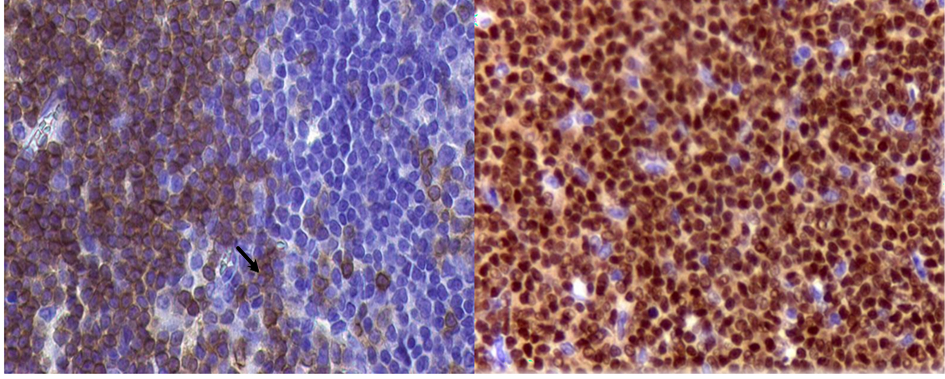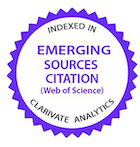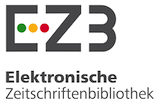Acute phase protein and vitamin D concentration in dogs with multicentric lymphoma
DOI:
https://doi.org/10.1590/1809-6891v23e-72650EAbstract
This study aimed to evaluate the serum concentration of vitamin D (25-Hydroxyvitamin D) and acute phase proteins (APPs; alpha-1 acid glycoprotein, haptoglobin, transferrin, ceruloplasmin, albumin, IgA, IgG and alpha-1 - antitrypsin) as potential biomarkers for prognostic and therapy response in dogs with multicentric lymphoma submitted to the CHOP (Cyclophosphamide, Doxorubicin, Vincristine and Prednisone) chemotherapy protocol. Thirteen dogs with multicentric lymphoma classified as high grade by cytology were included in the treatment group (GL), while ten healthy dogs were included in the control group (GC). Serum was collected in the weeks T0, T5 and T10 of CHOP chemotherapy protocol, for the GL group, and in a single collection, for the GC group. All the collected samples were evaluated for the APPs and vitamin D concentrations through electrophoresis and chemiluminescence methods, respectively. Diagnostic and staging tests were performed for all the dogs in the GL group, and included cytopathology, histopathology and immunohistochemistry of the affected lymph node. Of these dogs, 9 achieved a complete response and 4 a partial response to the treatment. Data analysis was performed with the R software. The results demonstrated that serum concentrations of IgA, haptoglobin and α1-acid glycoprotein were significantly different between the groups and also between the different chemotherapy times analyzed (p<0.05), indicating that these proteins can be considered as sensitive biomarkers for lymphoma in dogs. Furthermore, the α1-acid glycoprotein showed prognostic value for the disease, with 63% specificity. However, vitamin D concentration was not correlated with prognosis of the dogs with lymphoma.
Keywords: lymphosarcoma; prognosis; acute phase reaction; therapeutic response; hematopoietic neoplasia.
Downloads
References
Marconato L, Stefanello D, Valenti P, Bonfanti U, Comazzi S, Roccabianca P, Caniatti M, Romanelli G, Massari F, Zini E. Predictors of long-term survival in dogs with high-grade multicentric lymphoma. Journal of the American Veterinary Medical Association. 2011; 238(4):480-485.
Dorn C.R., Taylor D.O. & Hibbard H.H. 1987. Epizootiologic characteristics of canine and feline leukemia and lymphoma. Am. J. Vet. Res. 28:993-1001.)
Silva, Marcia C., et al. Graduação histológica e aspectos clínico-patológicos. Pesq. Vet. Bras 38.4 2018: 38.(4): 751-761.
Thomas R,Seiser EL,Motsinger-Reif A. Refinig tumor associated aneuploid through “genomic recording” of recurrent DNA copy number aberrations in 150 canine Non- HodgKin’s lymphomas. Leukemia & Lymphoma.2011;52:1321-1335.
Aricó A, Ferraresso S, Bresolin S, Marconato L, Comazzi S, TeKronnie G, Aresu L. Array- based comparative genomic hybridization analysis reveals chromosomal copy number aberrations associated with clinical outcome in canine diffuse large B-cell lymphoma. Plos One. 2014;9(11):e111817.
Marconato L, Aresu L, Stefanello D, Comazzi S, Martini V, Ferrari R, Riondato F, Rouquet N, Frayssinet P, Sabattini S. Opportunities and challenges of active immunotherapy in dogs with B-cell lymphoma: a 5-year experience in two veterinary oncology centers. Journal for Immunotherapy of Cancer. 2019;7:146.
Mellanby RJ. Beyond the skeleton: the role of vitamin D in companion animal health. Journal of Small Animal Practice. 2017;57(4):175-180.
Malone EK, Rassnick KM, Wakshlag JJ, Russell DS, Al-Sarraf R, Ruslander DM, Johnson CS, Trump DL. Calcitriol (1,25‐dihydroxycholecalciferol) enhances mast cell tumour chemotherapy and receptor tyrosine kinase inhibitor activity in vitro and has single‐agent activity against spontaneously occurring canine mast cell tumours. Veterinary and Comparative Oncology. 2010;8(3):209-220.
Eckersall PD, Bell R. Acute phase proteins: biomarkers of infection and inflammation in veterinary medicine. The Veterinary Journal. 2014;185: 2327.
Valli VE, Kass PH, SanMyint M, Scott F. Canine Lymphomas: Association of Classification Type, Disease Stage, Tumor Subtype, Mitotic Rate, and Treatment With Survival. Veterinary Pathology. 2013;50(5):738-748.
Comazzi S, Gelain ME. Use of flow cytometric immunophenotyping to refine the cytological diagnosis of canine lymphoma. The Veterinary Journal. 2011;188(2):149-155.
Marconato L, Martini V, Stefanello D, Moretti P, Ferrari R, Comazzi S, Laganga P, Riondato F, Aresu L. Peripheralbloodlymphocyte/monocyteratio as a useful prognostic factor in dogs with diffuse large B cell lymphoma receiving chemo immunotherapy. The VeterinaryJournal. 2015;206(2):226-230.
Sierra Matiz OR, Santilli J, Anai LA, Da Silva MCL, Sueiro FA, Sequeira JL, Magalhães LF, Magalhães GM, Tinucci Costa M, Calazans SG. Prognostic significance of Ki67 and its correlation with mitotic index in dogs with diffuse large B-cell lymphoma treated with 19-week CHOP-based protocol. Journal of Veterinary Diagnostic Investigation. 2018;30(2):263-267.
Poggi A, Miniscalco B, Morello E, Gattino F, Delaude A, Ferrero-Poschetto L, Aresu L, Gelain ME, Martini V, Comazzi S, Riondato F. Prognostic significance of Ki67 evaluated by flow cytometry in dogs with high-grade B-cell lymphoma. VeterinaryandComparativeOncology. 2017;15(2):431-440.
Jark PC, Fracacio CP, Anai LA, Silva MCL, Calazans SG, Senhorello ILS, Costa MT, Sequeira JL, Sueiro FAR.Caracterização histopatológica e imunofenotípica do linfoma multicêntrico canino no Brasil: um estudo de 203 casos. Arquivo Brasileiro de Medicina Veterinária e Zootecnia. 2020;72(3):787-793.
Wakshlag, JJ, Rassnick KM, Malone EK, Struble AM, Vachhani P, Trump DL, Tian L. Cross-sectional study to investigate the association between vitamin D status and cutaneous mast cell tumours in Labrador retrievers. British Journal of Nutrition. 2011;106(S1):S60-S63.
Gerber B, Hauser B, Reusch CE. Serum levels of 25hydroxycholecalciferol and 1, 25- dihydroxycholecalciferol in dogs with hypercalcaemia. Veterinary Research Communications. 2004;28(8):669-680.
Selting KA, Sharp CR, Ringold R, Thamm DH, Backus R. Serum 25-hydroxyvitamin D concentrations in dogs– correlation with health and cancer risk. Veterinary and Comparative Oncology. 2016;14(3):295-305.
Sánchez-Céspedes R, Fernández-Martínez MD, Raya A, Pineda C, López I, Millán Y. Vitamin D receptor expression in canine mammary gland and relationship with clinicopathological parameters and progesterone/oestrogen receptors. Veterinary and Comparative Oncology. 2018;16(1):E185-E193.
Bush BM. Bioquímica Plasmática. In: Interpretação de resultados laboratoriais para clínicos de pequenos animais. São Paulo: Roca, 2004, p. 169-223.
Vieira MC, Coleta FED, Godoy AV, Sobreira MFR, Galvão ALB, Borin S, Crivelenti LZ, Anai LA, Nogueira AFS, Santana AE. Acute Phase Proteins in Canine Lymphoma During Antineoplastic Chemotherapy. Brazilian Journal of Veterinary Pathology. 2010;3(2):86-92.
Calazans SG,Daleck CR,Fagliari JJ,Repetti CF, De Nardi AB, Castro JHT, Fernandes, S. C.; César, J. R. F.; Rodigheri, S. M. Proteinograma sérico de cães sadios e com linfoma obtido por eletroforese em gel de poliacrilamida (SDS-PAGE). Arquivo Brasileiro de Medicina Veterinária e Zootecnia. 2009;61(5):1044-1048.
Cray C. Acutephaseproteins in animals. Progress in Molecular Biology and Translational Science. 2012;105:113-150.
Nakagea APM, Santana AE. Avaliação das funções hepática e renal de cães expostos ao antineoplásicodoxorubicina. Revista Acadêmica: Ciências Agrárias e Ambientais. 2008;6(3):371-379.
Cerón JJ, Eckersall PD, Martínez-Subiela S. Acutephaseprotein in dogsandcats: currentknowledgeand future perspectives. Veterinary Clinical Pathology. 2005;34(2):85-99.
Eckersall PD. Proteins, Proteomics and The Dysproteinemias. In: Kaneko JJ, Harvey JW, Bruss ML. Clinical biochemistry of domestic animals. 6th ed. Burlington: Academic Press. 2008. p.117-155.
Vieira, M.C., et al. Acute Phase Proteins in Canine Lymphoma During Antineoplastic Chemotherapy. Brazilian Journal of Veterinary Pathology. 2010, 3(2), 86-92.
Dias FR, Anai LA, Jark P, Hernandez GV, Sierra-Matiz OR, Calazans SG. Estudo Retrospectivo de 33 Casos De Linfoma Cutâneo Canino. Investigação. 2015;14(3).
Vail DM, Young KM. Canine lymphoma and lymphoid leukemia. In: Withrow SJ, Vail DM. Withrow &MacEwen’s Small Animal Clinical Oncology. Philadelphia: Saunders Company; 2019. p.699-733.
Curran, K.; Thamm, D.H. Retrospective analysis for treatment of naive canine multicentric lymphoma with a 15‐week, maintenance free CHOP protocol. Vet. Comp. Oncol., v.14, p.147-155, 2016.
Garnica, T.K., Lesbon, J.C.C., Ávila, A.C.F.C.M. et al. Liquid biopsy based on small extracellular vesicles predicts chemotherapy response of canine multicentric lymphomas. Sci Rep 10, 20371 (2020). https://doi.org/10.1038/s41598-020-77366-7
Beaver LM, Strottner G, Klein MK. Response rate after administration of a single dose of doxorrubicin in dogs with B-cell or T-cell lymphoma: 41 cases (2006-2008). J Am Vet Med Assoc.2010 Nov 1;237(9):1052-5 doi: 10.2460/javma.237.9.1052.
Wolf-Ringwaall A, Lopez L, Elmsli, et al. Prospective evaluation of flow cytometric characteristics, histopathologic diagnosis and clinical outcome in dogs with naive B-cell lymphoma treated with a 19-week-CHOP protocol. Vet.Comp Oncol.2019;18(3):342-352.
Mocellin S. Vitamin D and cancer. Deciphering the truth. Biochim Biophys Acta. 2011;1816(2):172-8
Wakshlag JJ, Rassnick KM, Malone EK, Struble AM, Vachhani P, Trump DL, et al. Cross-sectional study to investigate the association between vitamin D status and cutaneous mast cell tumours in Labrador retrievers. Br J Nutr. 2011;106(Suppl1):S60–3. doi: 10.1017/S000711451100211X.
Husbands B. Low stores of 25-hydroxyvitamin D levels and its association with cancer in dogs. VCS presentation, 2013.
Gershwin, L. J. Clinical Veterinary Immunology. In: Kaneko J. J., Harvey J. W.; Bruss M. L. Clinical biochemistry of domestic animals, 6th ed. Burlington: Academic Press, 2008, p. 157-172.
Mcgrotty, Y. L.; Arteaga, A.; Knottenbelt, C. M.; Ramsey, I. K.; Eckersall, P. D. Haptoglobin concentrations in dogs undergoing trilostane treatment for hyperadrenocorticism. Veterinary Clinical Pathology, Santa Barbara, v. 34, n. 3, p. 255-258, 2005.
Dobson, J. M.; Gorman, N. T. Canine Multicentric lymphoma. 2: Comparison of response two chemotherapeutic protocols. Journal of Small Animal Practice, London, v. 35, p. 9-15, 2001.
Laemmli, U. Cleavage of Structural Proteins during the Assembly of the Head of Bacteriophage T4. Nature 227, 680–685 (1970). https://doi.org/10.1038/227680a0
Battisti, M.K.; Silva, D.M.; Reusingi, M.S. et al., Proteínas de fase aguda em cadelas com neoplasia mamária. Ciência Rural, Santa Maria, v.43, n.5, p.902-907, mai, 201. https://doi.org/10.1590/S0103-84782013000500025

Published
How to Cite
Issue
Section
License
Copyright (c) 2022 Brazilian Animal Science/ Ciência Animal Brasileira

This work is licensed under a Creative Commons Attribution 4.0 International License.
Authors who publish with this journal agree to the following terms:
- Authors retain copyright and grant the journal right of first publication with the work simultaneously licensed under a Creative Commons Attribution License that allows others to share the work with an acknowledgement of the work's authorship and initial publication in this journal.
- Authors are able to enter into separate, additional contractual arrangements for the non-exclusive distribution of the journal's published version of the work (e.g., post it to an institutional repository or publish it in a book), with an acknowledgement of its initial publication in this journal.
- Authors are permitted and encouraged to post their work online (e.g. in institutional repositories or on their website) prior to and during the submission process, as it can lead to productive exchanges, as well as earlier and greater citation of published work (See The Effect of Open Access).































